加密飞行 Vol.12 | 我们曾经知道如何建造伟大的地方:Devon & Edge Esmeralda
“只是现在遗忘了。”
"Crypto Flight" is a series of interviews by Uncommons, focusing on pioneers active in the Ethereum and crypto world. It documents the reality of the crypto space and produces diverse perspectives, using conversation and everyday language as methods to distill distant and far-off truths. Inspired by Antoine de Saint-Exupéry's Vol de Nuit (Night Flight), it symbolizes the challenge and exploratory spirit of cypherpunks and crypto citizens as they venture to the ends of the world.
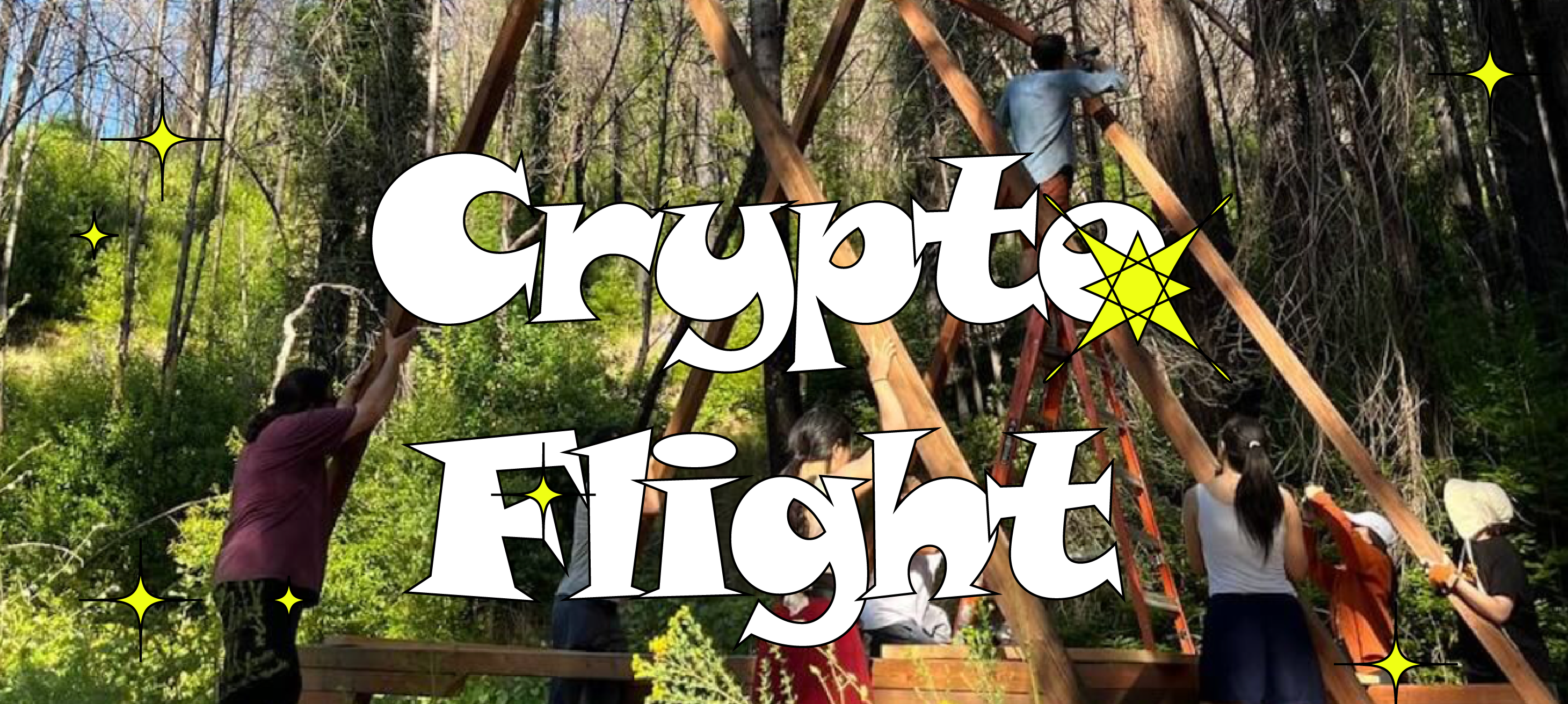
孩提时代,我度过每个夏天的那个小镇
A town I visited every summer as a kid.
我们曾经知道如何建造伟大的地方
We already knew how to build great places.
创造比现在更美好的地方
Creating better places than what we currently have
干脆在这里建个城镇
Let's start a village
建设一个创意乌托邦
Building a Creative Utopia
💡Editor's note/编者按
Esmeralda 让人产生的瑰丽想象,正从此时此地的土壤和泥土中迸发出来。《禅与摩托车维修艺术》中提到的 Chautauqua 运动像是一场漫长而跨越时间的骑行,虽然已经渐行渐远,却在不经意间留下了对当下世界的影响。从社区到博雅学院,从金门公园到哥斯达黎加,对伟大地方的想象和实践不仅仅停留在过去。
The splendid imagination evoked by Esmeralda is bursting forth from the soil and earth of the here and now. The Chautauqua movement mentioned in Zen and the Art of Motorcycle Maintenance resembles a long, time-spanning ride—though it has gradually faded into the distance, it has nonetheless left an unintentional yet lasting impact on the present world. From communities to liberal arts colleges, from Golden Gate Park to Costa Rica, the imagination and realization of great places are not merely relics of the past.
此文是「加密飞行」专栏首辑访谈策划之一,来自友邻社区 SocialLayer 的 Eggy 和 Jiang。作为一群经常在各地巡游的 “飞行员”,他们所带来的独特视野,正是「加密飞行」所想要展示的:一群从过去降落,置身于此刻,并渴望着挑战和探索更好未来的远航者。我们期待着这种展示,能够飞跃语言与物理距离的障壁,成为未来加密公民同现实之间的桥梁。
This article is one of the first series of interviews for the "Crypto Flight" column, curated by the SocialLayer community members Eggy and Jiang. As a group of "pilots" often journeying across different places, they bring a unique perspective—exactly what "Crypto Flight" aims to showcase: a group of voyagers descending from the past, living in the present, and yearning to challenge and explore a better future. We hope this showcase can transcend barriers of language and physical distance, becoming a bridge between future crypto citizens and the realities they face.
Social Layer × Uncommons
Reporter: Eggy&Jiang
Translator: Paris
Edit:0614&Alexis
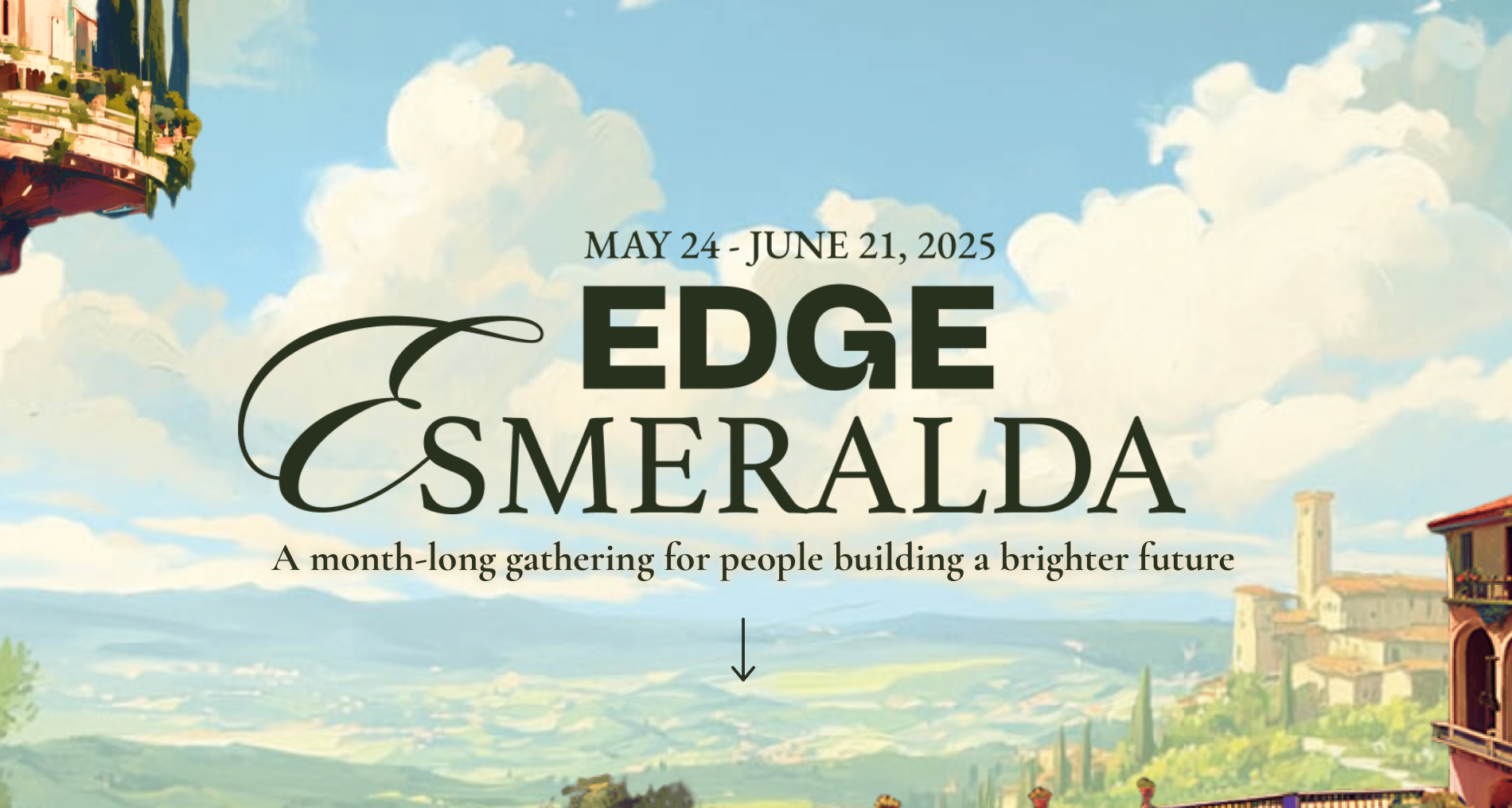
About
Devon
Founder of Esmeralda Institute
Jiang
Founder of Social Layer
Eggy
Ph.D Candidate in Design for Social Innovation
Contributer of Social Layer
孩提时代,我度过每个夏天的那个小镇
A town I visited every summer as a kid
I'm Devon, one of the co-organizers of Edge Esmeralda. This presentation is about the long-term vision for Esmeralda. The event we've been hosting throughout June is designed to be a prototype for the community I'm working on building.
我是 Devon,Edge Esmeralda 的共同组织者之一。这次演讲是关于 Esmeralda 的长期愿景。我们在整个六月举办的活动, 旨在成为我正在努力建设的社区的一个原型。
First, I want to talk about a town I visited every summer as a kid. My grandmother lives in a small town called Chautauqua in Western New York. Chautauqua is a town of about 8,000 people—much like Healdsburg—super walkable and bike-friendly. What makes Chautauqua truly special is its nine weeks of programming every summer. I went throughout the entire summer. The town has pavilions scattered throughout. They host amazing performers and lecturers. I vividly remember being eight years old when Jane Goodall came to talk about chimpanzees—I was thrilled! The Beach Boys performed there once. The town even has its own orchestra and opera company. Mind you, it's six hours from New York City and located in the countryside. It's like a liberal arts college experience but for multi-generational families.
首先,我想谈谈孩提时代,我度过每个夏天的那个小镇。我的祖母住在纽约西部一个叫 Chautauqua 的小镇,大约有 8000 人,就像 Healdsburg 一样。这里非常适合步行和骑车,真正特别的地方,是它每年夏季的九周活动。我整个夏天都会待在那里,小镇上会举办精彩的演出和讲座。我清楚地记得八岁那年,Jane Goodall 来这里讲解黑猩猩,The Beach Boys 曾经也在这里演出过。这个小镇甚至有自己的交响乐团和歌剧公司。值得一提的是,Chautauqua 离纽约市有六小时的车程,位于乡村地区。这里就像是一所博雅学院,所面向的则是多代同堂的家庭。
Another thing I love about Chautauqua is its human-scale urbanism. Once you arrive, you rarely need to get back in your car until you leave. People walk and bike everywhere. Older residents often use electric scooters, which is the life phase my grandmother is now in. Life revolves around the front porch—it's the most important room in the house. It's a unique space, half-public and half-private, where you can greet neighbors walking by while enjoying the privacy of your home.
One last thing about Chautauqua: it was actually established by some of the great American inventors of the Industrial Revolution. People like Edison, Henry Ford, Harvey Firestone, and others would spend summers there with their families. They saw Chautauqua as a place where their children could learn and thrive in a wholesome, family-friendly environment that fostered lifelong learning. A fun fact I love to share is about the Athenaeum Hotel in Chautauqua—it was the first hotel to be lit by Edison's light bulb. Edison himself installed the lighting with a small team, which I find incredible. Chautauqua is a truly special place. It's been around for exactly 150 years—this year marks its 150th anniversary—and it's still thriving.
Chautauqua is also a place where a lot of social change has happened over the past 150 years. This is the Chautauqua Women's Club, where many early meetings took place—Susan B. Anthony and her collaborators met here. It's a place where ideas can be explored, where people are trying to make the world a better place, sometimes not always succeeding, but always making the best effort. I think it's one of the strongest civic fabrics I've ever seen.
让我十分喜爱的另一特点是人性化的城市设计。到达那里之后几乎不需要开车,除非要再次离开。人们四处步行和骑车,年长的居民使用电动滑板车,我祖母现在的生活状态就是如此。人们的生活围绕着前廊展开——它是房子里最重要的房间,这个独特的空间既有公共感也有私密感,你可以在享受家的私密性的同时,迎接走过的邻居。
实际上,Chautauqua 是由一些美国工业革命时期的伟大发明家创建的,像是托马斯·爱迪生、亨利·福特、哈维·法尔斯通等人,他们会在这里和家人一起度过夏天。对他们来说,这是一个能够让孩子们在健康、适合家庭的环境中学习和成长的地方,而且这里鼓励终身学习。有趣的是,Chautauqua 的 Athenaeum 酒店是第一个使用爱迪生灯泡照明的酒店。爱迪生本人和他的小团队一起安装了这些灯泡,真不可思议,对吧?今年恰好是它的 150 周年纪念,直至今天,它依然很有活力。
过去 150 年来,这里也是一个发生了许多社会变革的地方。Chautauqua 女性俱乐部的许多早期会议都在这里举行,Susan B. Anthony 和她的合作者们曾在这里会面。这里是一个可以探索思想的地方,人们在这里努力让世界变得更好,虽然并不总是能成功,但总是尽最大努力。我认为这里是我见过的最强大的公民社会之一。
A few years ago, I visited with my now-husband, who's here in the back holding the chairs. While we were walking around, he asked me a question that stopped me in my tracks: Why aren't there more places like Chautauqua? That question really made me think. I had been going there every summer since I was born. I loved it deeply, but I had never considered how it came to be, why it's so unique, or why there aren't other places like it. It planted a seed in my mind: What would it look like to build a modern-day Chautauqua on the West Coast, tailored to a different community but rooted in the same principles?
几年前,我和现在的丈夫——正在后面帮忙搬椅子的那位——一起去了那里。当我们在小镇上散步时,他问了一个让我停下脚步的问题:为什么没有更多像 Chautauqua 这样的地方?尽管从出生开始每年都去,我却从未想过它是怎么形成的,以及为什么它如此特别?这在我心中播下了一个种子:如果在西海岸建立一个现代版的 Chautauqua,面向不同的社区,却根植于相同的原则,那会是怎样的?
One thing I think is so special about Chautauqua is how safe it feels for kids to roam freely. My parents would drop me off with my grandmother at the beginning of the summer and simply say, "Have fun." Grandma's only rule was that I had to be home by supper. I spent my days running around Chautauqua with friends, and I developed deeper friendships there than I did in my hometown in California. A big part of that was the town's walkability—kids didn't need to ask for rides. By contrast, my life in suburban California was a constant cycle of asking my parents to drive me places. They were essentially my chauffeurs, which, let's be honest, probably wasn't very enjoyable for them either. In Chautauqua, people know their neighbours. I know more of our neighbours around my grandma's house in Chautauqua than I know in the town that I lived in growing up and I've never moved. So it's kind of a crazy aspect. The environment is constantly encouraging learning and invention. There's so much like Edges Esmeralda. There's events happening all the time – learn, explore and build things. So I would spend several months or several weeks a year with my grandmother, which I think is actually really rare in the US.
So that leads me to Esmeralda, which is the name of the project that I'm working on to build a Chautauqua of the West. I'm currently in the process of looking for land in Northern California. I've identified some interesting sites. I've been talking to the land owners. This project here, this June, is an early iteration of what that could look like.
特别珍贵的一点是,孩子们在那里可以安全且自由地到处玩耍。父母把我送到祖母那里,说声“玩得开心”,随后就放心离开了。祖母唯一的规定则是我必须在晚餐前回家。和那些白天一起在 Chautauqua 跑来跑去的朋友建立的友谊,比在加州家乡时的那些更深厚。这很大程度上得益于小镇的步行友好性——孩子们不需要开口拜托父母送他们。相比之下,我在加州郊区的生活就是不断求父母开车送我的循环。他们基本上成了我的专职司机,坦白说,这对他们来说可能也不太有趣。那里的人彼此认识,在祖母家附近认识的邻居,比我在从小长大的家乡认识的邻居还多。这和Edges Esmeralda非常相似,小镇上总是有各种活动,鼓励人们学习、探索和创造。我每年都会和祖母一起度过好几周甚至几个月,这在美国其实是相当少见的。
这一切将我引向了 Esmeralda,我正在建设它。它的目标是打造一个“西部版的 Chautauqua”。我目前正在北加州寻找合适的土地,并已经锁定了一些有趣的地点。六月举办的 Edge Esmeralda 是这个想法的早期雏形。
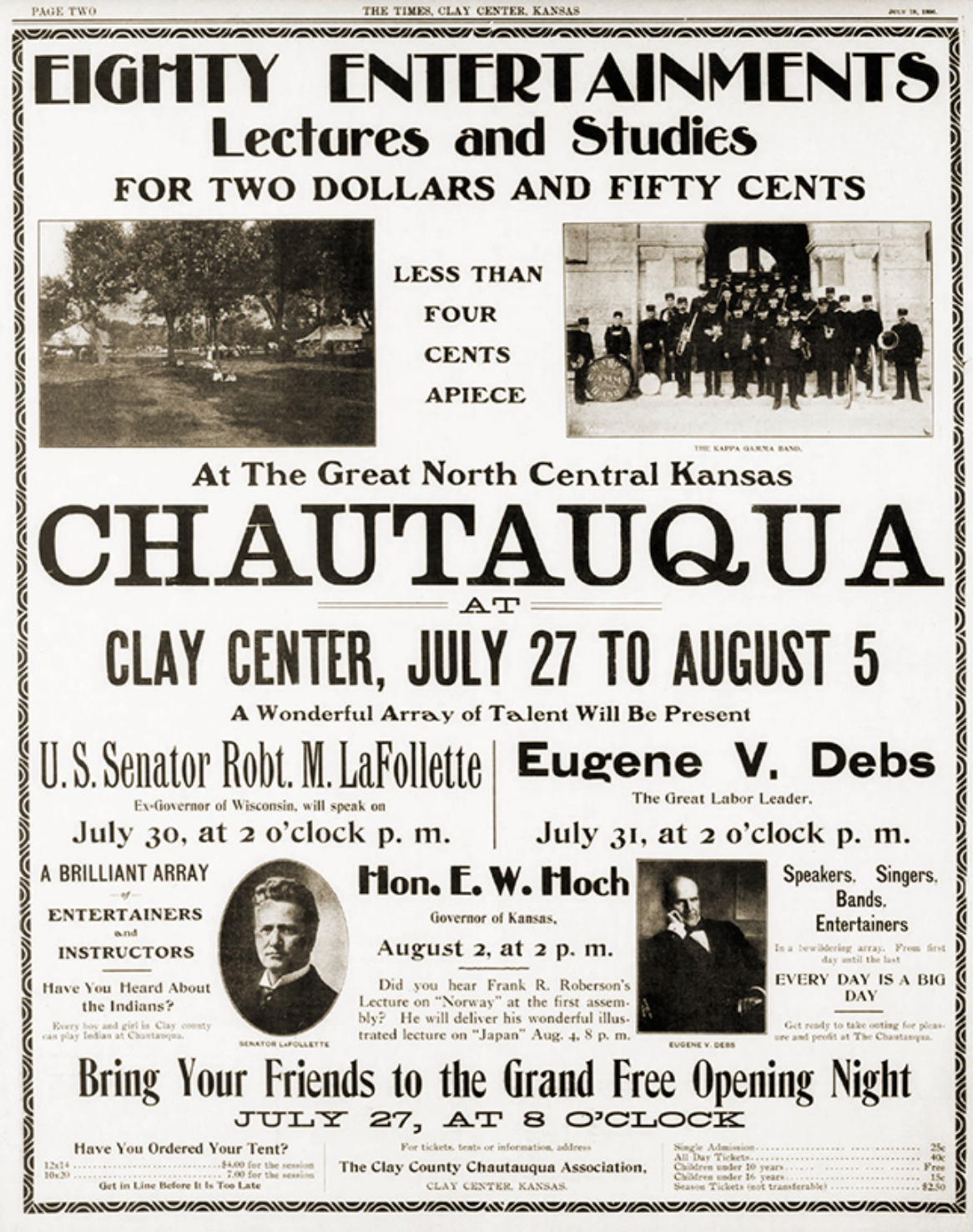
我们曾经知道如何建造伟大的地方
We already knew how to build great places
Okay, so I want to talk a little bit about the design objective for Esmeralda. I touched on these when we talked a bit about Chautauqua, but to dive in a little more. Making a community that is multi-generational is absolutely critical to me. Much of my life outside of Chautauqua has always been very age segregated. You know, there's a school where not only do you not hang out with adults or babies, you're actually only hanging out with people exactly to your age range in your same grade. I think we have so much to learn from people who are both older and younger than us. You've been living this at Edge Esmeralda, so hopefully, this feels intuitive. A lot of people think of college as the happiest years of their lives because they're learning with friends, sharing a context, and growing rapidly as individuals. But after college, those opportunities disappear. I don't think they have to. You could have that environment all the time, where there are constant opportunities to learn.
Something that I've been really happy to see here at Edge is that there are families of multi-generations. The barbers have been a particular highlight, where they have three generations of barbers who are here – grandma, two parents and their two kids. And there have been a few other families too. I want to say thank you to those families, because this is the first time we've ever organized an event with kids. I really feel like people took a risk on us to give it a try. It's been really a highlight for me. One of the things that a few people should come up to say over the course of this event is that they weren't sure if they wanted to have kids. But then, after spending time at Edge Esmeralda, they decided that they want to have kids, which is exactly the kind of thing that we're trying to encourage.
我想谈一谈 Esmeralda 的设计目标。首先,多代共居的社区对我来说至关重要。在 Chautauqua 之外的生活中,大多数场合都存在年龄隔离现象。在学校里,你不仅没有和成人或幼儿接触的机会,甚至只和完全同年龄段、同年级的同学互动。我们可以从比自己年长或年幼的人身上学到很多东西。你们已经在 Edge Esmeralda 体验了这样的生活,希望这种理念对你们来说是直观的。很多人认为大学是他们人生中最快乐的时期,因为他们可以和朋友一起学习、共享一个环境,并迅速成长。但在大学之后,这些机会就消失了。我认为并不需要这样。你和你的孩子都可以一直拥有那种环境,随时都有学习的机会。
在 Edge Esmeralda,我很高兴看到了多代同堂的家庭。Barber 一家特别让我印象深刻,他们三代人一起参加了活动——祖母、父母和两个孩子。还有其他一些家庭,我想对你们表示感谢。这是我们第一次组织多代同堂活动,我知道他们真的是在冒险。在活动期间还有几个人曾告诉我,他们之前不确定是否想要孩子,但在参加了 Edge Esmeralda 之后,他们决定要孩子了。这正是我们想要鼓励的。
Second, people here already know that I'm obsessed with making things walkable and bikeable. I hope you've gotten a taste of why this is so important. For one, it's healthier to walk around. Another is that you actually have a chance to talk to people when you bump into them on the street. But if you're behind the wheel of a car, surrounded by a glass bubble, you're just not going to have conversations. Maybe you'll get some road rage and yell at people—I know I do. As soon as I get behind the wheel of a car, my blood pressure rises, and I start seeing everyone as an enemy who might take my parking spot. When you walk or bike, you see people as humans and interact with them on a conversational level.
I already talked about independence for children, but I think it's critical. As I start thinking about having kids, I know I don't want to be a full-time chauffeur. I want to play with my kids and teach them things, but I don't want to spend my time hearing, “Mom, can you take me to Alice's house?” That's not how I want to spend my time. I want my kids to feel independent and not have to ask for permission every time they want to go somewhere.
One last piece on this: making things walkable and bikeable is also good for the environment. The obvious benefit is fewer emissions, but there's another aspect—more compact development. It's unintuitive, but once you look at how much space cars take up, it's dramatic. Cars can take up a third of the space in our cities. With cars, everything spreads out, which makes people depend on cars even more because everything is farther apart. It becomes a negative feedback loop. Think about a typical American strip mall with a six-lane road, no shade, and buildings separated by huge parking lots. It's soulless and terrible for the environment. In contrast, in a place where things are within walking distance, you use much less land, which allows us to preserve more nature. That's one of the key design principles for Esmeralda.
When places are designed for cars, they use so much land, and nature ends up farther away than it needs to be. If anyone here has been to Tuscany, the Cotswolds in the UK, or any old European towns, one thing they often have in common is how clustered and close everything is. There's so much within walking distance. Then, as soon as you walk five minutes out of town, you reach this urban edge where it transitions into agricultural fields, forests, and streams. It allows you to have the best of both worlds: the conveniences of daily life close by, and nature just beyond. This balance is really only possible when you build around people instead of cars.
大家已经知道,我对一个适合步行和骑行的社区有多执着了。步行更有利于健康,当你在街上碰到人时,你将有机会和他们聊聊。但如果你坐在车里,被玻璃隔绝,这样的互动就不太可能发生了。一旦我坐进车里,我的血压就会升高,变得容易路怒,把每个人都当成可能抢我停车位的“敌人”。步行或骑行会让你更容易把别人当作人来看待,以更自然的方式与他们交流。让孩子们独立同样也是至关重要的。作为一个正在考虑养育孩子,却不想成为全天候的“司机”的人,我想和我的孩子一起玩,教他们东西,但我不想整天听到“妈妈,你能送我去爱丽丝家吗”。这不是我想要的生活方式,我希望我的孩子能感觉到自己是独立的,而不必每次想去某个地方时都来请求许可。
让社区适合步行和骑行也是环境友好的。显而易见的好处是能够减少排放,还能带来更紧凑的开发模式。当你仔细观察汽车占用的空间时,你就会发现这个问题的严重性,汽车占据了城市中大约三分之一的空间。它让一切变得更分散,这反过来又让人更依赖汽车,因为各处的距离都更远。这形成了负反馈的循环。想想典型的美国式商业街区:六车道的马路、毫无遮蔽的太阳以及被巨大停车场分隔开的建筑物。这种环境缺乏灵魂,也对环境极为不利。相比之下,在一个所有东西都在步行范围内的地方,你可以使用更少的土地,从而保留更多的自然空间。这也是 Esmeralda 设计中的关键原则之一。
当一个地方是为汽车设计时,它会占用大量的土地,自然环境因此被推得比需要的更远。如果有人去过托斯卡纳(Tuscany)、英国的科茨沃尔德(Cotswolds),或任何一个欧洲古镇,你会注意到它们的共同点之一是建筑和设施非常集中,彼此靠得很近。很多东西都在步行范围内。距离城镇五分钟之外,就有一个过渡地带,那里是农业田地、森林和小溪。这种设计让你同时拥有两种最佳体验:日常生活的便利以及触手可及的大自然。这种平衡只有在围绕人而不是汽车建造的社区中才能实现。
Several interesting projects that could be incorporated into Esmeralda. For example, have you heard of Living Carbon? It's a really cool company developing trees that capture twice as much carbon and grow significantly faster. By preserving more land on the property, we could create a demonstration forest and plant a bunch of these trees. Another example is Nick Foley—I think I saw him earlier. Nick has been building awesome solar-powered A-frames and 3D-printed domes out in Mendocino. They're completely off-grid and solar-powered. On the more natural parts of Esmeralda's property, we could create glamping setups using this off-grid technology. Northern California also has areas with a lot of geothermal activity, and we're exploring geothermal methods to heat and cool homes. This has the added benefit of being incredibly quiet—no noisy air conditioning compressors, just peace and quiet.
Finally, promoting health and wellness is another key part of Esmeralda. This ties in with everything else: walkable urbanism encourages people to be more active, getting out on their feet instead of spending their days sitting at desks or driving everywhere. We also want to promote healthy food. While we're not at the stage of bringing on hotel and restaurant partners yet, when we do, we'd like to work with them to offer healthier food options, avoiding seed oils and focusing on fresh, local produce.
未来,一些来自我们朋友的有趣项目可能会融入 Esmeralda 的发展中。比如 Living Carbon,他们正在开发能吸收两倍碳且生长速度显著加快的树种。如果我们在项目中保留更多的土地,就可以创建一个示范森林,种植大量这样的树木。再比如 Nick Foley,他正在门多西诺(Mendocino)建造一些非常棒的太阳能供电的 A 型框架建筑和 3D 打印圆顶。这些建筑完全离网,依靠太阳能供电。在 Esmeralda 的自然保护区部分,我们可以利用这些离网技术来设置豪华露营点。北加州的部分地区地热活动频繁,我们也在探索用地热技术为房屋供暖和制冷。这种方式的一个附加好处是安静——没有嘈杂的空调压缩机,只有安宁的环境。
促进健康和养生也是 Esmeralda 的另一大核心理念。这和其他理念紧密相连:步行友好的城市规划鼓励人们更加活跃,走出家门,而不是一整天都坐在桌前或开车。我们也希望推动健康饮食。目前我们还没有和酒店及餐饮合作伙伴展开合作,但未来我们希望提供更健康的饮食选择,比如避免使用种子油,更多地关注新鲜的本地食材。
Backing up a bit, places like this are in really short supply in the U.S. I could rant all day about why that is, but one key point is this: people who live in car-oriented, non-communal environments often save up all year—or even all decade—to visit a beautiful place like Esmeralda. They spend 10 days walking around, enjoying themselves, and then return to their regular lives. It's similar to how I would go to Chautauqua for the summer but then come back to my daily life. I don't think it has to be this way. This is a choice we've made, albeit by accident.
There's a lot I could say about zoning codes, building codes, and other systemic issues that have led us here, but what matters is that Esmeralda is committed to building the way we did for thousands of years—until about a century ago, when things started to go off the rails. I know this track is called “Cities of Tomorrow,” but maybe it should be called “Cities of Yesterday,” because we already knew how to build great places. We just forgot.
在美国,这样的地方非常稀缺。我可以滔滔不绝地讲述原因,但有一点是至关重要的:那些住在以汽车为主、缺乏社区感的环境里的人,往往会攒一整年的钱,甚至好几年,就为了去像 Esmeralda 这样的美丽地方度假。他们花十天时间步行、放松,然后又回到日常的生活。这和我小时候去 Chautauqua 度过夏天然后回到日常生活很相似。但我认为事情不必是这样。这只是我们无意中做出的选择。
关于导致这种状况的分区法规、建筑规范等系统性问题,我有很多话要说。但重要的是, Esmeralda 致力于以我们过去几千年建造美好居住地的方式进行规划,而不是沿袭大约一个世纪前开始走偏的道路。我知道这个讨论被称为“明日之城”,但或许它应该被称为“昨日之城”,我们曾经知道如何建造伟大的地方,只是后来遗忘了。
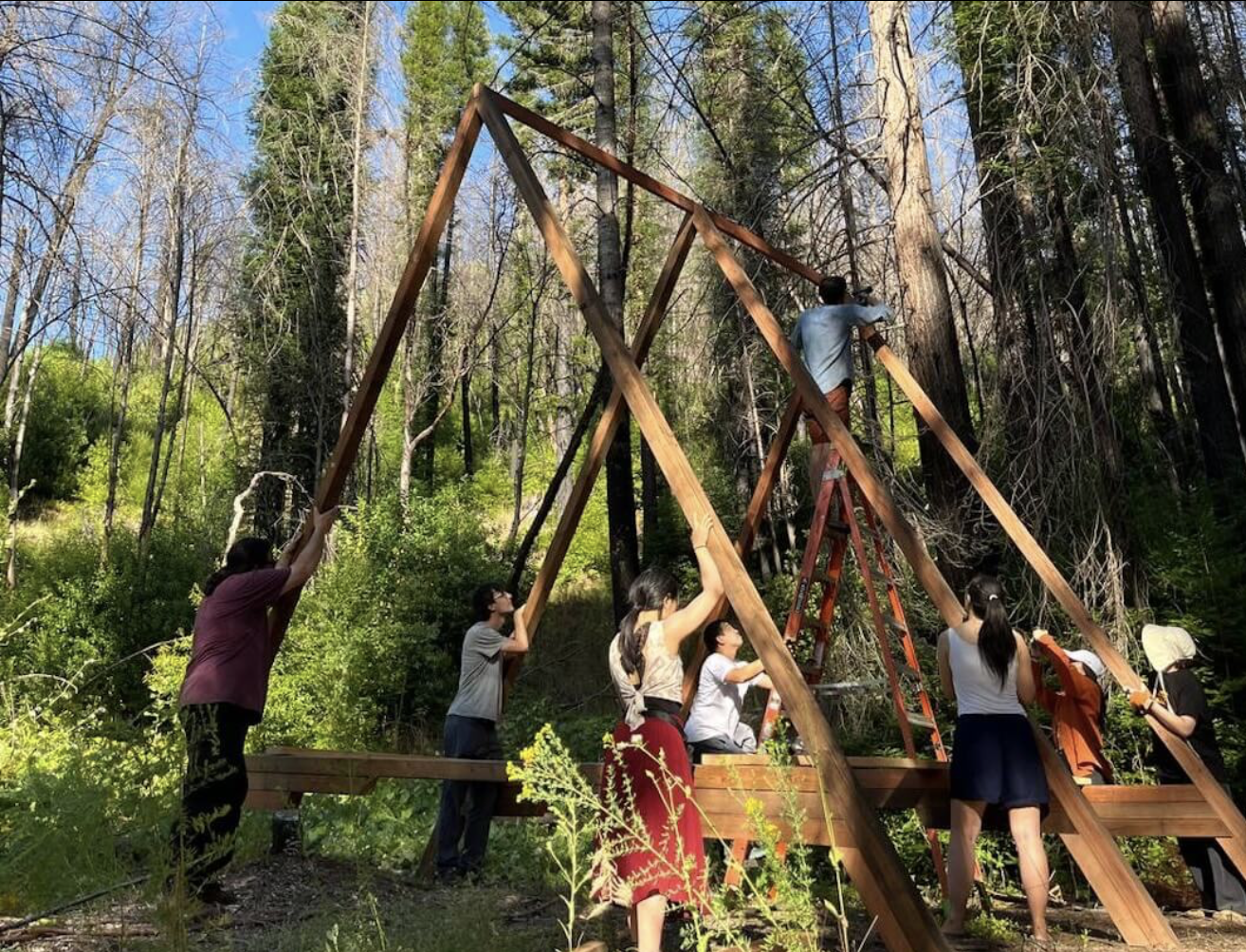
创造比现在更美好的地方
Creating better places than what we currently have
In North America, there are a few bright spots I want to share. Over the past few years, I've made it a point to travel to as many beautiful places built in the last few decades as possible. I became obsessed with the question: Why are all the places that have been built so different? It took me a long time to start finding answers, but once I did, I began creating a database of them. I found about 30 across the U.S., and I've made a point of meeting with the people who built them and asking them endless questions. They had no idea what they were getting themselves into. But there are three I want to call out in particular.
One is called Seabrook, Washington. It's about two and a half hours from Seattle, and it's this small, walkable town that was started about 20 years ago, with development really picking up 15 years ago. It's built around a lovely main street, just like a classic little Main Street. There are pedestrian paths going through the neighborhood as well. So, you can walk around the town without really having to interact with cars. This town has done fabulously well. It's one of the big vacation destinations for people living in Seattle. During COVID, people started living there full-time, and now it's become more of a full-time place with schools and other infrastructure built up.
北美地区有一些值得称道的例子。过去几年我特意去尽可能多的、美丽的新地方旅行,我痴迷于一个问题:为什么新建的地方与旧有的那些如此不同?我花了很长时间才找到答案。找到后我开始创建一个数据库,目前已经发现了大约 30 个。我特意与这些地方的建设者见面、向他们提问,发现他们自己甚至都没想到会面临那么多挑战。我想特别介绍其中的三个地方。
首先是位于华盛顿州的西布鲁克(Seabrook),它距离西雅图大约两个半小时车程,是一个小型的、适合步行的城镇。这个镇子大约在20年前开始建设,开发热潮则始于 15 年前。整个小镇围绕着迷人的主街,就像经典的小镇一样,而步行道贯穿街区。因此,你可以在小镇内随意步行,而无需担心与汽车互动。这个镇子发展的非常好,是许多居住在西雅图的人度假的主要目的地之一。疫情期间人们开始搬到这里全职生活,如今这里已经成为一个更为完善的社区,拥有学校和其他基础设施。
The second one I want to talk about is Serenbe, Georgia. This is the town where they implemented geothermal heating and cooling. It's actually a requirement throughout the entire town. So, when you walk around Serenbe, even though it's fairly dense by U.S. standards, it's silent. You can hear crickets and frogs, but you don't hear air compressors in the middle of August, which is especially rare in Georgia. Serenbe is modeled after the Cotswolds in the U.K., so it's a chain of villages about 30 minutes outside of Atlanta. People live there full-time, and it's one of the most beloved places in the Atlanta region. One other thing I want to mention about Serenbe is that it's one of many beautiful developments that have been built in the South over the last 30 to 50 years, depending on how you count.
When I think about the South, I used to imagine classic car-oriented suburbs, sprawling
neighborhoods. That's the majority of development in the American South. However, there's a small community of builders, developers, and town founders who have built about a dozen or two dozen communities in Georgia, South Carolina, Florida's panhandle, Oklahoma, and some other places in that area. These communities are absolutely spectacular, and I think they're very under-traveled, especially by people on the West Coast.
第二个地方是位于乔治亚州的瑟伦比(Serenbe)。这个镇子使用了地热供暖和制冷技术,这在整个城镇内都是强制性的。所以当你在瑟伦比漫步时,即便以美国的标准来看,这里也是相对密集的,但环境却非常安静。你会听到蟋蟀和青蛙的叫声,但即使在炎热的八月,也不会听到空调压缩机的噪音,这在乔治亚州尤其少见。瑟伦比的设计灵感来自英国的科茨沃尔德地区(Cotswolds),那是一系列距离亚特兰大约 30 分钟车程的村庄。这里的居民大多是全职居住的,也是亚特兰大地区最受欢迎的地方之一。还有一点值得一提的是,瑟伦比是过去 30 到 50 年间南方涌现的许多美丽社区之一。
以前提到美国南方,我的印象是典型以汽车为导向的郊区,社区则分布零散。这的确是美国南方大部分发展的模式。然而,有一个小型社区由一些建设者、开发商和城镇创始人组成,他们在乔治亚州、南卡罗来纳州、佛罗里达州的狭长地带、俄克拉荷马州等地,建立了大约十几个社区。它们美得令人惊叹,同时也很少被人们,尤其是美国西海岸的人造访。
The last one I want to point out is my personal favorite example. It's called Las Catalinas, and it's in Costa Rica. It’s a completely car-free town—100% car-free. It's maybe 50 to 60% a resort town because it's on the beach, but there are actually quite a few people who live there full-time. They move there for the schools, and there are about 20 kids who take a bus to a local school. I wish I had included more slides of it in the deck because it's one of the most beautiful places I've ever been. You can imagine an Italian or Spanish hill town, with stair-street streets everywhere. These are very charming, human-scale, winding streets that go up the hillside. The architecture is just spectacular—it's like if an Italian hill town was built with modern construction, quality materials, and all the necessary amenities, like toilets and things like that.
最后一个则是我个人最喜欢的例子,它叫拉斯卡西塔斯(Las Catalinas), 位于哥斯达黎加。这是一个 100% 无车的社区,有半数以上属性像是度假小镇,因为它靠近海滩;实际上还有不少人长期住在那里。他们搬到那里,主要是为了孩子的教育。你可以想象一个意大利或西班牙的小山镇,到处是台阶式的街道,它们非常有魅力,规模适宜,蜿蜒着延伸到山坡上。建筑风格令人叹为观止,宛如一个现代化建造的意大利山镇,使用优质材料,并配备所有现代生活所需的设施。
This whole community shown here is only 20 acres. For context, Golden Gate Park in San Francisco is about 1,000 acres, so this is really, really small in comparison. I thought, Okay, I'm going to get bored of this place within a day. But after a whole week, I still wasn't sure I had seen the entire community. A big part of that was the very organic street grid or bridge-street network—it's easy to get lost in little hidden alleys or stumble upon a small square or a hidden home. It was striking to me how the design of the streets made the place feel so much bigger than it actually was. Also, the people who build these towns all go by different titles, but I like to call them town founders. They tend to be the most friendly, helpful people imaginable because they're all obsessed with creating better places than what we currently have.
整个社区的面积只有 20 英亩。作为对比,旧金山的金门公园(Golden Gate Park) 约有 1000 英亩。所以这个地方相对非常小。我本想着,可能在这儿待个一天就会觉得无聊,但待了一整周后,我仍不确定自己是否走遍了整个社区。这里的街道网格或桥街网络非常有机——你很容易迷失在一些隐秘的小巷,或者偶然发现一个小广场,一座隐藏的房子。这让我印象深刻:街道设计如何让这个地方显得比实际大得多。此外,建造这些小镇的人有着各种不同的头衔,但我更喜欢称他们为“小镇创始人(town founders)”。他们通常是那种友善、乐于助人的人,并且痴迷于创造比现在更美好的地方。
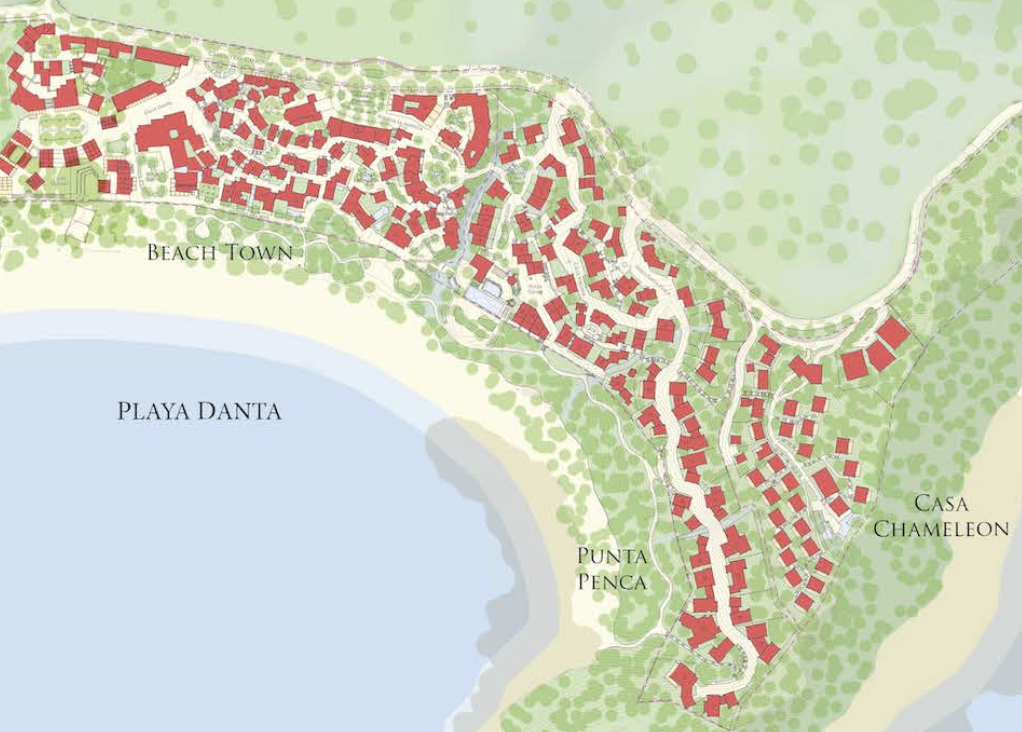
干脆在这里建个城镇
Let's start a village
I think one of the critiques people often have with these communities is, "Isn't it just going to be for rich people?" It's something I worry about a lot, but I think the essence of the problem is that there aren't enough of these places. Turns out, when you have a very low supply of something that people like, the prices go up. So to me, the solution is building more wonderful places so that everybody can live that way. There's nothing inherently expensive about these sorts of places. Take the West Village in Manhattan, which was originally a working-class community. If you look at the buildings, they have very simple construction—there's nothing fancy about them. But because it's so scarce, it's become one of the most expensive places in the country to live.
人们常常会批评这些社区,认为“难道这只会变成有钱人的地方吗?”这是我非常担心的问题。但我认为问题的本质在于,这样的地方太少了。当某种受欢迎的东西供应非常少时,价格自然会上涨。我认为解决办法是建设更多这样的美好社区,让所有人都能享受到这种生活方式。本质上这类地方并不一定昂贵,曼哈顿的西村(West Village)最初是一个工人阶级社区。如果你仔细观察那些建筑,会发现它们的结构非常简单,没有任何奢华之处。然而稀缺性已经使它已经成为全国生活成本最高的地方之一。
Let me talk a little bit about the places where I'm looking for land. The reason I'm looking in regions within an hour and a half to two hours' drive from these cities is that I think it's a sweet spot where you can live full time but still have access to a major city with job opportunities. We don't just want to rely on having remote workers. While they can be wonderful, having a place where physical things are built is also important. This is another opportunity that we have, because we're looking at land on the urban fringe and beyond. We can now actually afford maker spaces and light manufacturing hubs, so having craftsmanship-type facilities throughout the community is also possible.
现在我主要在距离大城市一到两个小时车程的地方寻找土地。我希望选择距离大城市一到两个小时车程的区域,这是一个理想的平衡点——既可以作为全职居住地,同时还能接触到城市的就业机会。我们并不想完全依赖远程工作者。虽然远程工作者很棒,但我们也需要一个能够实际生产实体产品的地方。在城市边缘甚至更远的地方寻找土地,让我们有可能负担得起创客空间和轻工业制造中心。所以,在社区中设置一些工艺制造设施也是完全可行的。
I think there are two main components of this project: the hardware and the software. The hardware is the buildings, the roads, the infrastructure, and the coffee shops. The software is all of you—the people, the community, and the programming that makes the place unique, like the Chautauqua-style events scattered throughout. It takes a really long time to build a place. I've also been discovering that it takes a long time to find and buy good land. But in the meantime, I've been pushing forward the software part: the community. And so the long-term vision, once we purchase the land and start building the infrastructure, is to begin merging hardware and software and bringing people to the property—starting with things like camping, events, parties, and tours. Then, as the infrastructure and homes get built, people can begin living there full-time or have second homes, gradually developing the community.This is really a lesson I drew from Chautauqua.
因此,我认为这个项目有两个主要组成部分:“硬件”和“软件”。硬件是指建筑物、道路、基础设施和咖啡店。而软件则是指人群、社区以及让这个地方独特的各种活动程序,比如那些像 Chautauqua 风格的活动。建造一个地方需要非常长的时间,寻找和购买合适的土地也同样。过去我一直在做软件方面的尝试,而长期愿景是,一旦我们购买了土地并开始建设基础设施,就开始将硬件和软件结合起来,把人们带到这个地方——首先通过露营、活动、聚会和旅游等形式。随着基础设施和住宅的建设,人们可以开始全职居住,或者拥有第二个家,并逐步发展这个社区。
Chautauqua started 150 years ago as a campsite on the edge of Lake Chautauqua in Western New York. It was actually started by a group of humanitarian Sunday school teachers who wanted to teach each other and learn. It was a time when most people didn't have access to college, so they all brought a bunch of books and shared them with their friends. They had such a good time that they decided to return the next year and the next. Over time, it became more secular and more focused on learning. Within five years, they started thinking, Maybe we should build a shack because we're clearly coming back every year. Let's build something slightly more permanent so we don't have to set up camp each time. After 10 years, they thought, You know, maybe we should build a little house, because sleeping in the shack is getting kind of annoying. As the events grew longer, within a few decades, they decided, Let's start a town. We want to live here now. All we need are the buildings.
The lesson here is that you can start with a network and community of people who are developing relationships with each other. That can then transform into a full-time community. So, in a way, you're all part of a timeshare presentation. Of course, I don't expect that the majority of people who come to Esmeralda will move there permanently. But one of my big motivations for hosting this event is to give people a taste of what it's like to live in a walkable place with people you admire, with interesting things happening, and a multi-generational community. It's a chance to experience what the future could be like.
Chautauqua 始于 150 年前,位于纽约州西部的 Chautauqua 湖边。最初是由一群人道主义的主日学校教师创建的,他们希望互相教授和学习。那时大多数人没有上大学的机会,于是人们带来了大量书籍互相分享。后来他们决定每年都回来。随着时间的推移,Chautauqua 变得更加世俗化,更注重学习。五年后他们开始想:“我们是否应该建个小屋子?既然我们每年都来,不如建个稍微永久一点的,这样就不用每年都搭帐篷。”又过了十年后,他们想:“要不我们建个小房子吧。这样就不用住在小棚子里了,也更舒适。”随着活动时间逐渐延长,几十年后,他们终于意识到:“干脆在这里建个城镇吧,这里已经成为我们的家了,只需要建造房屋就可以。
因此,你可以从一个人际网络和社区开始,大家彼此建立关系。这个网络可能转化为一个全职社区。因此,从某种意义上说,你们每个人都是一个共享度假 Demo 的参与者。当然,我并不指望大多数来到 Esmeralda 的人会永久定居。但我举办这个活动的一个重要动机是,让人们体验一下生活在一个适合步行的地方的感觉,这里有你钦佩的人与各种有趣活动,形成了一个跨代社区。这是一个体验未来可能性的机会。
At the end of this, I want to show a few pictures of Chautauqua, which is my favorite place in the world—though Las Catalinas was also a pretty big contender! Here's one of the pictures I showed earlier, now a little bigger. This is called the Hall of Philosophy. It's a beautiful pavilion where they have a lecture every morning. They also have multi-faith services, with priests, rabbis, and people from all different religions coming to give sermons. Something that's so cool is that this is like a town square, much like the Healdsburg Plaza, and it's ringed by homes. People can sit on their front porches and listen to the morning lecture from the comfort of their homes, surrounded by beautiful trees.
Chautauqua is probably the most beloved place I've ever been. Every single inch of it is cared for with such attention. One of my favorite things is their garden competition, where all the older residents compete to win. If you win, you get added to the official Chautauqua tour. It's both fun and a bit of good-natured competition, but it also means that the entire town is filled with the most beautiful gardens you've ever seen.
最后,我想展示几张 Chautauqua 的照片,它是我最喜欢的地方。这是“哲学大厅”,一座美丽的亭子,每天早晨都有讲座。他们还举行多宗教活动,牧师、拉比以及来自各种宗教的人都会来讲道。这就像一个小镇广场,就像 Healdsburg 的广场,四周环绕着房屋。人们可以坐在自己家的前廊上,舒适地听着早晨的讲座,周围是美丽的树木。
Chautauqua 可能是我去过的最受人喜爱的地方。这里的每一寸土地都被精心照顾,我的最爱之一是他们的花园竞赛,所有年长的居民彼此竞争谁的花园最美。如果你赢了,你的花园会被加入到官方的 Chautauqua 旅游路线中。这不仅有趣,还带有善意,意味着整个小镇遍布着美丽的花园。
Oh, and you might recognize this! This is not Chautauqua—this is Edge Esmeralda. Our hope is to create a place that is as lasting, multi-generational, and open-minded to new ideas as Chautauqua. Hopefully, in a few years, or within a decade, it will have a permanent home you can visit—or even live in, if you're interested. So, that's it.
你们或许会认出这个地方!这不是 Chautauqua——这是 Edge Esmeralda。我们希望创造一个像 Chautauqua 一样持久、多代共存并且对新思想开放的地方。希望几年后,或者在十年内,将会产生一个可以让你拜访,或是居住的永久家园。
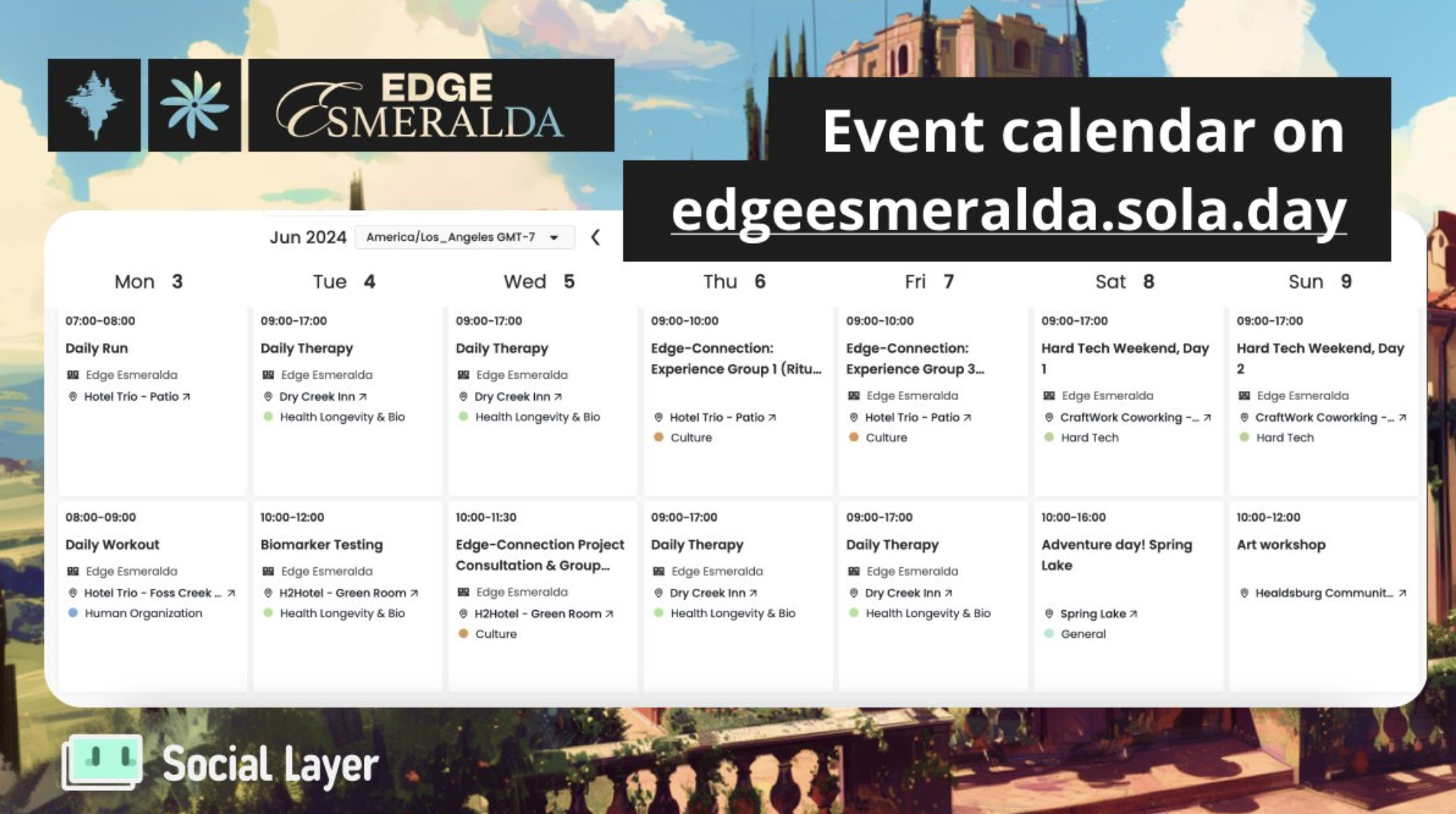
丈量小镇
Measuring the town
Anon:
How many acres do you think you'll need for your village?
你认为你们的城市需要多少英亩的土地?
Devon:
The more the better. But I think, at a minimum, about 100 acres would be barely enough. For example, Las Catalinas—like I mentioned—has 20 acres of developed land, but they actually own a 1,200-acre property. Las Catalinas will have about 200 acres developed out of the 1,200, leaving 1,000 acres preserved for trails and rainforest conservation. We'd love to do something similar, where we keep the developed footprint small, so that you can walk outside your door and be close to nature.
越多越好,至少需要 100 英亩才勉强够用。例如,Las Catalinas 有20英亩的开发土地,但他们实际上还拥有一块 1,200 英亩的土地,因此人们准备开发其中的 200 英亩,剩余的 1,000 英亩将被保留用于步道和雨林保护。我们希望做一些类似的事情,保持开发的土地面积较小,这样你可以走出家门就能接触到自然。
Anon:
There's a big focus on the town, which I think is great. But I'm curious if you think this plan could work in a dense city. For example, in San Francisco, they tried getting rid of cars in the park, and people were upset—especially people with disabilities, and those who struggle to access the park. So, while your proposal makes a lot of sense for a smaller town, does it scale to a bigger city?
这个项目非常注重小镇建设,我觉得这很棒。但我很好奇,您认为这个计划是否适用于密集型城市?例如,旧金山曾尝试在公园里禁止使用汽车,但人们并不高兴——特别是那些有残障的人,以及那些难以进入公园的人。所以,虽然您的提议对于小镇来说非常有意义,但它是否能在大城市中推广呢?
Devon:
I think it works. There are different definitions of "work." There's the question of whether it can physically work—whether someone can just make it happen. And then there's the political question of whether you can get it done. On the first point, I have no doubt that you can make it work. For example, in Tokyo, where I was recently, most people don't use cars in the largest city in the world. It's a city of 38 million people, and most people don't get into a car for weeks at a time. They have other ways to get around, like mass transit, which works well for people with physical disabilities, as long as there are ADA-accessible elevators to get into the subway. So, yes, I have no doubt that it's doable.
我认为是可行的。“可行”有不同的定义。一部分是它是否能在物理上实现,而政治层面的问题是你是否能让它真的付诸实践。我毫不怀疑这是物理上可以实现的。世界上有很多能够不依赖汽车的地方。例如最近我去过东京,这个世界上最大的大城市有3千8百万人口,绝大多数人几乎不使用汽车。人们有其他出行方式,比如公共交通,这对于有身体障碍的人也非常有效,只要地铁有无障碍电梯可以进入。
I'm more concerned about the political economy of it. The way I got involved in all of this, and the idea that we should be building new places, is that I was very involved in housing policy in San Francisco. I had all these bright, fresh ideas about how we could improve the streets. There has actually been a lot of progress in the last few years, but it made me realize that we're just fighting over small margins that aren't going to change the underlying fabric of the community—not at all. To me, the underlying fabric is what's broken in the model.
In almost every American city, you have extremely wide roads, which might sound like a minor detail, but when you have wide roads, everything feels farther apart. It encourages cars to go really fast. So, I think it's very possible to make it work, but because we've built our infrastructure a certain way, it's quite difficult to change it afterward, simply because people don't want it to change. I mean, you should see the anger people have if you try to remove a single parking space and replace it with a parklet.
我更担心的是它的政治经济性。参与这些事情,以及我们应该建设新地方的想法,源自于我在旧金山参与住房政策的工作。我曾经有很多关于改善街道的新颖想法,在过去的几年里已经取得了不少进展,但仍然这让我意识到,我们只是在为一些微不足道的边际问题争斗,这些并不能改变社区的基础结构。几乎每个美国城市都会看到非常宽的道路,虽然这可能听起来是个小细节,但当道路很宽时,一切都显得更加遥远。这鼓励了汽车以非常快的速度行驶。如果你试图移除一个停车位并将其改建为一个小公园,看看人们的愤怒就知道了。
In hindsight, they probably could have been designed better. But at the same time, people really resist change, even when what's in place isn't actually working. So, if you want to live in a place that's truly human-first and prioritizes biking, you just have to build up traction and momentum. I think cities like San Francisco should keep pushing forward with these ideas. There's so much potential, but for the type of place I want to live in, I really want it to be more fundamentally focused on walking.
事后看来,它们的设计可能本可以做得更好。但同时,人们对变化的抵制非常强烈,即使现有的东西实际上并没有发挥作用。所以,如果你想住在一个真正以人为本、优先考虑骑行的地方,你就必须积累足够的支持和动力。我认为像旧金山这样的城市应该继续推动这些想法。这里有巨大的潜力,但对于我想要居住的地方,我希望它能更加根本地专注于步行。
和人们谈谈
Talking to people
Anon:
I also worked in a self-governed community in South India. It's over 60 years old, founded in the 1960s. It still exists as an international community in South India, and I've learned a lot from it. For example, there are factors that help sustain such communities, like maintaining a minimum population density, and placing a cap on that density. Additionally, in terms of the economy, a key challenge is ensuring the community is self-sustainable. There are also social fabric challenges. The land — 3000 acres in South India — was procured from local farmers.
我也曾在印度南部一个自我治理的社区工作,它有60多年历史,至今仍然作为一个国际社区存在。有一些因素可以帮助维持这样的社区,比如保持最低人口密度,并且设定上限。从经济角度来看,关键挑战是确保社区能够自给自足。这个社区的土地占地3000英亩,是从当地农民那里购买的。
The relationship between the community and the local population is crucial, and managing the sense of "otherness" is key. It's important to define the boundary between "us" and "them." These dynamics have shaped the community over the past 64 years and have impacted its growth. Initially, it aimed to be a dense, compact city, but it hasn't developed that way.
社区与当地居民之间的关系,管理“他者感”,这些都是关键。明确“我们”和“他们”之间的界限非常重要。这些动态塑造了社区的发展,并影响了它的成长。最初,它的目标是成为一个密集、紧凑的城市,但它并没有朝这个方向发展。
Devon:
One of the things we wanted to avoid at Edge Esmeralda was making it feel like we were coming in and taking over Healdsburg. We made a lot of effort to reach out to the local community in Healdsburg and the broader North Sonoma area. We did four different scouting trips to meet with people, hosted community dinners, presented at city council to share what we're doing, and distributed flyers around town to get the word out. We also became members of the Chamber of Commerce in several local areas, including Healdsburg and Cloverdale.
在 Edge Esmeralda,我们想避免让人觉得我们是在进入并接管 Healdsburg。我们做了很多努力去与 Healdsburg 当地社区以及更广泛的北索诺玛地区建立联系,进行四次不同的考察旅行,拜访当地人,举办社区晚宴,向市议会介绍我们的计划,并在镇上分发宣传单。我们还加入了几个当地商会,其中包括 Healdsburg 和 Cloverdale。
Actually, someone asked earlier about the lessons I've learned from looking for land. My main takeaway is that you just have to get boots on the ground and talk to people. It's simple, but spending time in person with people, talking about what they care about and what they want for their community, is key. In the end, most people want the same things—they just have different ideas for how to achieve them. So, just talking with them and asking, "What do you care about, and how can we make it happen together?" has been crucial. That's how the best relationships are built.
Even in Healdsburg, we experimented with this. We worked with some local groups, and we didn't even ask for it, but we ended up receiving a grant from people in Healdsburg who wanted to support our non-profit. This grant helped us bring our project to the town, and it allowed us to charge less for tickets and provide scholarships for people who might not have been able to afford the full price. There are a lot of opportunities like this—you just have to talk to people and ask, "What do we both want, and how can we make it happen together?"
在寻找土地的过程中,我最大的收获是,你必须亲自去实践并和人们交流。面对面交谈,了解他们关心什么,他们希望为社区做些什么才是关键。最终,大多数人都想要相同的东西——只是他们实现这些目标的方式不同。
在 Healdsburg,我们也尝试过这种方式。我们和一些当地团体合作,并且从 Healdsburg 的人们那里获得了一笔资助,他们希望支持我们的非营利项目。这个资助帮助我们把项目带到这座小镇,并使我们能够以更低的票价收费,并为那些可能无法承担全价的人提供奖学金。像这样的机会有很多——你只需要和人们交流,问问“我们都想要什么,怎样才能一起实现?”
穿越魔法世界
Traveling Through the Wizarding World
Anon:
You had an earlier slide about what if the normal world could be like this other place. I guess I would ask, what if it was the other way around? What if the whole point is that this is not the normal world? Instead, let the normal world remain normal and let this be the enchanted space.
你之前的幻灯片提到过,让普通的世界能像另一个世界。那么如果恰恰相反呢?如果整个意义在于这不是一个普通的世界?比如让普通的世界保持普通,让这个地方成为一个被施下魔法的空间。
Devon:
Yeah, I agree. This is something that Chautauqua does so well. I mentioned the bell tower they have. Every hour it rings, just like any other bell tower. But to me, every time I hear a bell tower now, I think about Chautauqua and my grandmother. It's a small thing, but it transports you to a different dimension. Now, I do want to challenge the idea that you should only be creating places that don't feel enchanted. I may be misrepresenting how you said it, but I believe day-to-day life should feel enchanted and special. One thing I see as broken in the way many Americans live — and probably a lot of people around the world — is that they live what feels like a dull life, only to have a two-week vacation where everything is nice and relaxing, with good food and enjoyment. Then they return to their regular lives, which allow them to afford that nice vacation.
For me, I want to live a life where every day I wake up, go for a nice walk, make myself a drink I enjoy, and savor the small moments with my family and friends. I want to love my day-to-day life. One of the best changes I've made in the last few years is that when I travel somewhere, I'm more excited to come home than to go on the trip. I really look forward to getting back to my routine, which I've curated with the people I love. I think it's a shame that we don't live that way. You can do whatever you want — if some people prefer a life that's mostly bland with a few peaks, that's one way to live, but it's not for me.
我之前提到过 Chautauqua 的钟楼。每小时它都会响铃,这和其他的钟楼一样。但是对我来说每次听到钟声都会想到那里和我的祖母。一件小事能把你带入一个不同的维度。现在,我想挑战一下“你应该只创造那些迷人的地方”这种观点。我认为日常生活应该是充满魔力和特别感的。我看到的许多美国人(也许世界上很多人)生活的一个问题是,他们过着看似单调的生活,只有在两周的假期里,一切才会变得美好、放松,有美食和享受。然后他们回到平常的生活中,这种生活让他们能够负担得起那段美好的假期。
我想过每天醒来后去散步,做自己喜欢喝的饮料,和家人朋友一起品味那些小小的瞬间的生活。我希望能爱上我的日常生活。在过去几年里,我做的最好的改变之一是,当我去某个地方旅行时,我比起去旅行,更期待回家。如果有些人喜欢过一种大部分是平淡的生活,偶尔有几次闪光,那也是一种生活方式,但不是我想要的。
I still think there are moments for peak experiences. It's not like you should never do something really special. In a town, for example, in urban design, I think every building should be lovely and beautiful, but there could still be a tower that's just like, "Wow, that looks like a fairy tale" or a church, or a beautiful little pastry shop that is just so perfectly detailed. So, I still think the peaks are important, but to me, it's much more important to have a beautiful and wonderful day-to-day life.
我仍然认为有一些时刻值得追求极致体验,这并不是说你永远不能做一些特别的事情。比如在一个小镇里,在城市设计中,我认为每一座建筑都应该是可爱的、美丽的,但仍然可以有一座塔楼,那座塔楼就像“哇,那看起来像是童话里的东西”,或者是一座教堂,或是一家美丽的小面包店,它的每个细节都做得完美无瑕。所以,我仍然认为这些闪光时刻很重要,但对我来说,更重要的是拥有美丽和充实的日常生活。
PostScript
初听到 Edge Esmeralda 时,我第一个联想到的是火人节(Burning Man)。它们都让我有一种脱离日常、进入全新世界的感觉。火人节以激烈的自我表达和极端的创意闻名,而 Edge Esmeralda 则选择了一条更持久、更平衡的路径。它不仅是一个数字游民的聚集地,更像是一个多元文化与学科的交汇点。你既能结交志同道合的朋友,也能在轻松的氛围中深入探讨最前沿的科技与人文议题。
Edge Esmeralda 对社区的愿景超越了传统的“共享办公”或“灵活居住”的概念,它是一个综合生态系统,汇聚了对技术、科学、社会组织充满激情的人们。 社区的一大亮点是其“终身学习”的理念。在这里,教育不是以学校或学术的形式存在,而是一种充满活力的日常体验。无论是成年人参加前沿科技的讨论,还是孩子通过互动游戏学习科学与艺术,教育无处不在且形式多样。社区也时常会邀请有意思的演讲者和实践者分享他们的经历——从创业的心路历程到颠覆性的未来设想, 来激发跨领域的合作与探索。
另一个值得称道的特点是,Edge Esmeralda 并没有让科技与自然对立,而是努力将两者融合。社区提倡“车轻生活”,鼓励步行和共享交通,为居民创造更多邻里交流的机会,同时减少对环境的影响。社区设计也充分考虑了自然的参与,从绿植环绕的建筑到户外学习与休闲空间,都体现了对自然的尊重与热爱。
在这个快节奏、信息爆炸的时代,Edge Esmeralda 的慢节奏生活、深度学习与强社群感显得尤为珍贵。它的意义不仅在于提供一个美好的生活环境,更在于为人类的未来提供了一种全新的探索路径:如何在科技加速发展的背景下,依然保留人与人之间最本质的联系,依然尊重自然,并从中找到满足与幸福。
Edge Esmeralda 是一种生活方式,也是一种未来哲学。如果你向往一个既自由又充满灵感的世界,如果你渴望与志同道合者共同探索生活的意义,这里或许就是你梦想的起点。
Social Layer × Uncommons
Reporter: Eggy&Jiang
Translator: Paris
Edit:0614 & Alexis
👇文中图片来源
https://www.edgeesmeralda.com
https://www.chq.org
https://www.lascatalinascr.com/
https://en.wikipedia.org/wiki/Chautauqua
Who we are 👇
Uncommons
区块链世界内一隅公共空间,一群公共物品建设者,在此碰撞加密人文思想。其前身为 GreenPill 中文社区。
Twitter: x.com/Un__commons
Newsletter: blog.uncommons.cc/
Join us: t.me/theuncommons
Social Layer
Social Layer 是一个模块化社交基础设施,旨在帮助全球范围内的快闪城市(Popup City)、意向性社区(Intentional Community)和分布式社群节点的运营、扩展和相互连接。
Twitter: x.com/SocialLayer_im
Matters: matters.town/@sociallayer_im
Join us: t.me/sociallayer_im
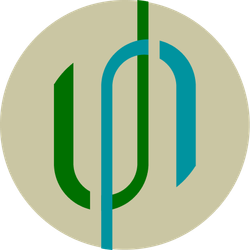

Discussion